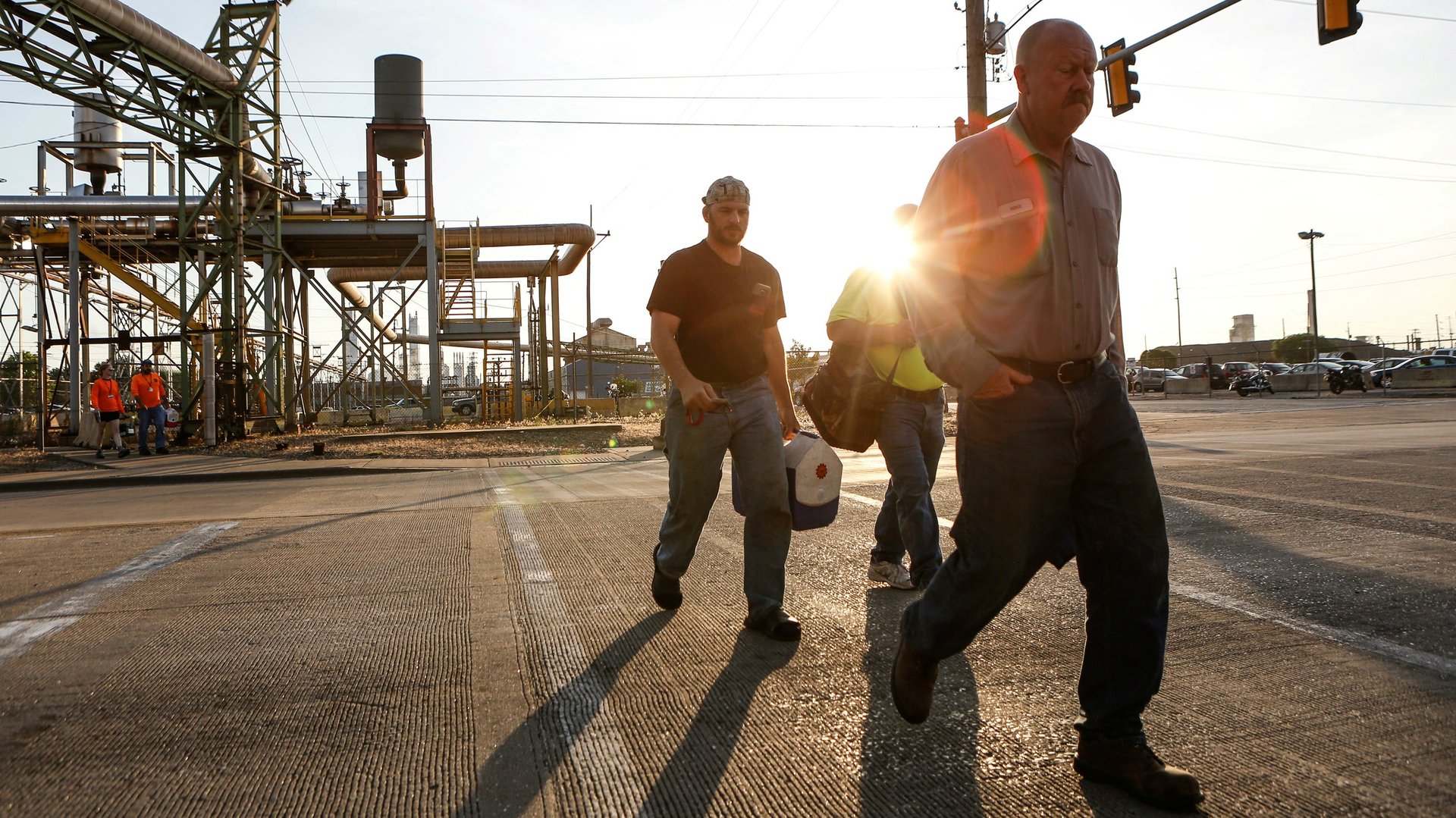The US unemployment rate is at a 48-year low—so why are so many Americans still out of work?
The US jobs market is tighter than a pair of skinny jeans. Only 3.7% of people in the labor force were out of work in September. That’s the lowest unemployment rate since 1969. Meanwhile, the American economy added only 134,000 jobs—below expectations, but not exactly surprising, given the hit of Hurricane Florence last month.


The US jobs market is tighter than a pair of skinny jeans. Only 3.7% of people in the labor force were out of work in September. That’s the lowest unemployment rate since 1969. Meanwhile, the American economy added only 134,000 jobs—below expectations, but not exactly surprising, given the hit of Hurricane Florence last month.
Average hourly earnings rose 2.8% in September compared to the same month a year ago—slightly slower growth than in August (without adjusting for inflation). But considering distortions from Hurricane Florence and last year’s Hurricane Harvey, they could well have grown even more, notes Ian Shepherdson, economist at Pantheon Economics. In the third quarter, wages grew 3.4% in annualized terms—the fastest pace in a decade.
On top of all that, the overall civilian labor force participation rate—the share of adults who are either employed or actively looking for work—stayed steady, at 62.7%.
“We know this decrease in the unemployment rate is due to more people finding jobs, as the labor force participation rate remained unchanged in September,” the White House declared. The data provide “more evidence of a booming United States economy and a strong labor market,” it concluded.
Look at the data a little differently, however, and that sunny outlook dims a bit.
The US seems to be hitting the climax of this economic cycle. Normally, that ought to mean a swift pickup in wages. Back in 2007 and 2000, earnings were growing at a brisk clip of more than 4%, notes Patrick Chovanec, economist at Silvercrest Asset Management. Wage growth is still considerably below that rate.
Other things we’d normally expect to see are also noticeably absent. For example, when the labor market appears to be this tight, it would make sense to see more people in their prime working years (between the ages of 25 and 54) with jobs. However, the employment-to-population ratio for this group is conspicuously feeble. In September, only 79.3% of working-age Americans had jobs. That’s a smaller share than the final months of the last cycle, which ended in 2007—and way down from the late 1990s and early 2000s.
Part of the problem is that many of them seem to have exited the workforce—meaning, that they’ve given up looking for work. While the share of prime-age Americans in the labor force ticked up ever so slightly in September, to 82%, that’s still well shy of the share before the Great Recession, when it was above 83%. And it’s starkly lower than in 2000, when more than 84% of prime-age Americans were working.
This is all pretty weird. At this point in the long, steady expansion we’re currently in, the cream of America’s working crop should have no trouble finding work and commanding higher wages. All this suggests that while the US economy is indeed looking good by many measures, it still has more growing left to do to pull all the people in need of work back into the labor force.